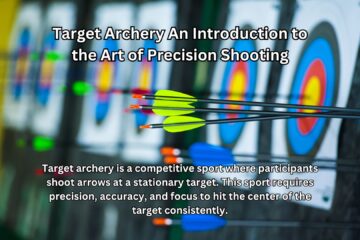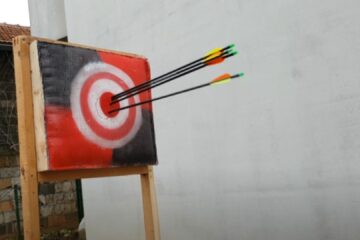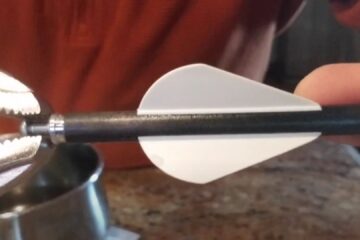Hello and welcome to the fascinating world of archery! Have you ever wondered how fast does an arrow travel when it is released from a bow? The answer might surprise you!
The speed of an arrow is determined by various factors such as the weight and length of the arrow, the type of bow used, and the strength and technique of the archer. In general, a typical arrow can travel at speeds ranging from 150 to 300 feet per second (45 to 90 meters per second).
However, some specialized bows and arrows can achieve speeds of over 400 feet per second (120 meters per second)!
The speed of an arrow affects not only its trajectory and accuracy but also its impact force. A faster arrow can penetrate deeper and deliver more kinetic energy upon impact, making it more lethal in hunting or combat situations.
In this article, we will explore the factors that influence the speed of an arrow and the average speed of different types of bows used in archery.
So grab your bow and arrows, and let’s dive into the exciting world of archery and the speed of an arrow: how fast does an arrow travel?
How fast does an arrow travel?
One of the most important aspects of archery is the speed of the arrow. How fast does an arrow travel? Let’s find out.
Arrow speed is commonly measured in either feet per second (fps) or meters per second (mps) when being discussed. The speed of an arrow can vary depending on several factors. They are:
Draw Weight of the Bow
The draw weight of a bow refers to the amount of force required to pull back the bowstring. However, a higher draw weight can also be more difficult to handle and require more physical strength from the archer.
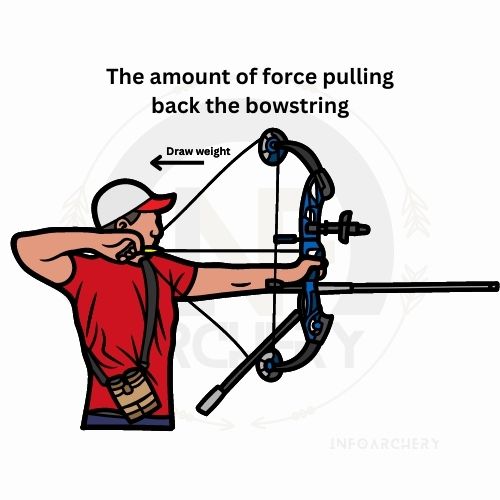

Length and Stiffness of the Arrow
The length and stiffness of an arrow can impact its speed and trajectory. Longer, stiffer arrows tend to travel faster than shorter, more flexible ones, as they experience less deformation and resistance in flight. However, longer arrows may be heavier and less stable in flight, while stiffer arrows may be more prone to breaking on impact.
Type of Arrowhead Used
The shape and weight of the arrowhead can also impact the arrow’s speed and trajectory. Broadheads, for example, tend to be heavier and slower than field points, as they are designed for hunting and require greater impact force. Lighter arrowheads can increase arrow speed, but may sacrifice some penetration power.


Power Stroke of the Bow
The power stroke of a bow refers to the distance the bowstring travels from its resting position to when it is fully drawn. A longer power stroke can generate more force and increase arrow speed, but also requires a longer draw length and may be more physically demanding for the archer.
Draw Length of the Bow
The draw length of a bow is the distance the bowstring is pulled back before releasing the arrow. A longer draw length can increase arrow speed, but also requires more physical strength and control from the archer. Additionally, a draw length that is too long or too short can negatively impact accuracy and consistency.
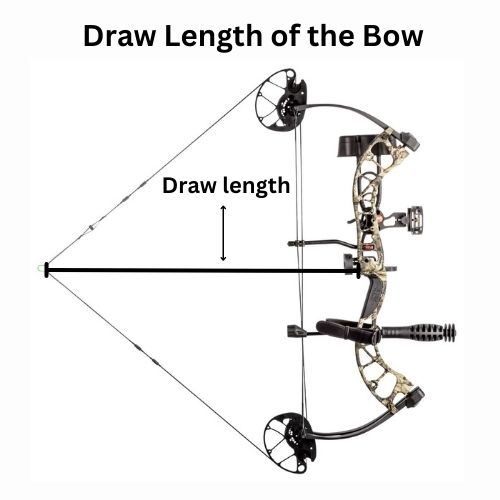
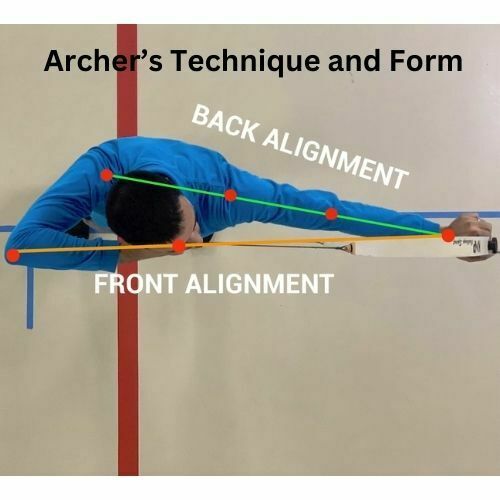
Archer’s Technique and Form
Proper technique and form can maximize the bow’s energy transfer to the arrow, resulting in greater speed. Factors such as grip, anchor point, and release technique can all impact the speed and accuracy of the shot.
Weather Conditions
Environmental factors such as wind and temperature can impact arrow speed and trajectory. Wind can cause the arrow to veer off course, while extreme temperatures can affect the bowstring and bow’s performance.
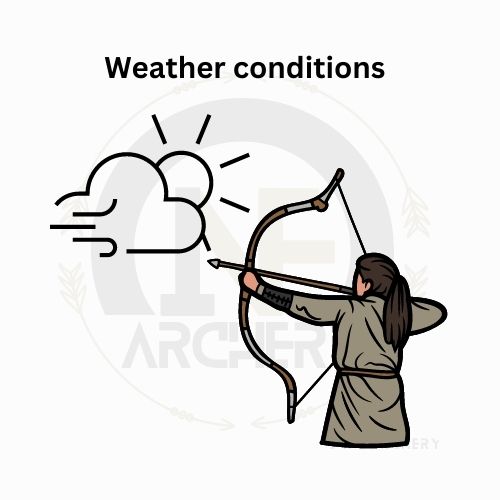
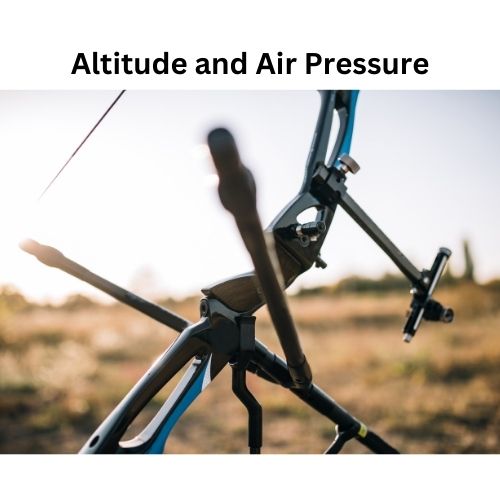
Altitude and Air Pressure
Higher altitudes and lower air pressures can reduce arrow speed due to decreased air density. This can be particularly relevant for archery competitions or hunting trips at higher elevations.
Arrow’s Weight and Balance
The weight and balance of the arrow can impact its speed and trajectory. Heavier arrows tend to be slower but more stable in flight, while lighter arrows may be faster but less accurate. The balance of the arrow can also affect its flight, with a front-heavy or back-heavy arrow potentially impacting accuracy and distance.
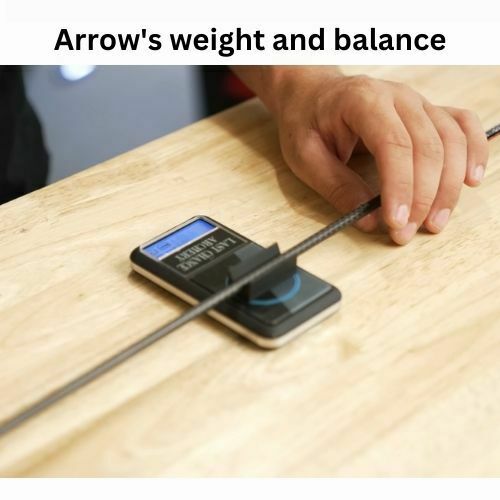
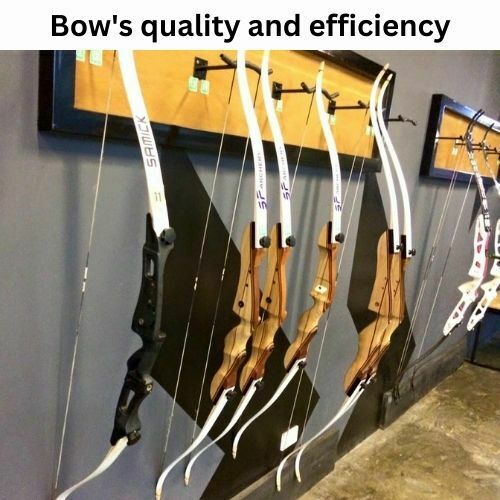
Bow’s Quality and Efficiency
A well-made, efficient bow can transfer more energy to the arrow and increase its speed. Factors such as the quality of materials used, design of the bow, and overall craftsmanship can all impact its performance.
String material and Tension
The type of material used in the bowstring and the tension applied to it can impact arrow speed. A higher tension can result in greater arrow speed, but can also put more strain on the bow and require more physical effort from the archer. The material used in the bowstring can also affect its durability and performance over time.
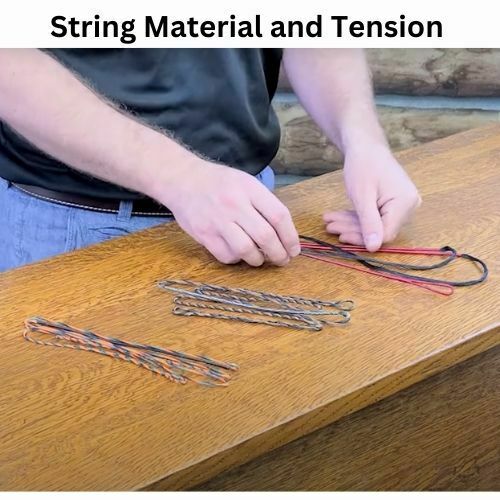
Arrow speed is an important factor in both hunting and competitive archery. In hunting, a faster arrow can improve accuracy and penetration, making it easier to take down game. In competitive archery, a faster arrow can increase accuracy and the distance at which targets can be hit.
Average Speed of Different Types of Bows
The type of bow used can greatly influence arrow speed, with longbows, recurve bows, compound bows, and crossbows all having different characteristics and average speeds. Here, we will explore the typical ranges of arrow speeds achieved with each type of bow.
Longbow‘s average speed
Longbows tend to be relatively slower than other types of bows due to their simpler design and lack of mechanical aids. However, they can still be quite powerful and effective. The average speed of a longbow can vary widely depending on its specifications, with some models potentially reaching speeds of over 200 fps.
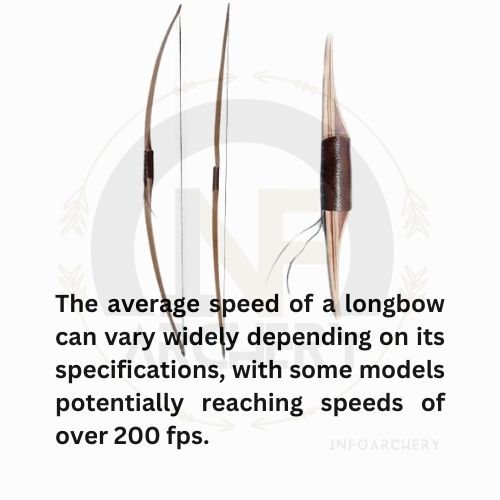
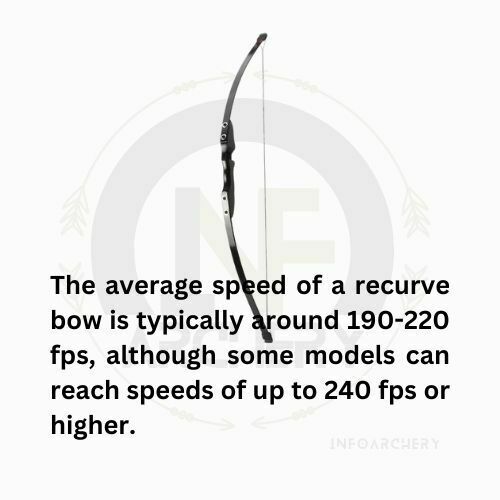
Recurve bow‘s average speed
Recurve bows are generally faster than longbows due to their more efficient design, which allows for greater energy transfer to the arrow. The average speed of a recurve bow is typically around 190-220 fps, although some models can reach speeds of up to 240 fps or higher.
Compound Bow‘s average speed
Compound bows are known for their speed and power, thanks to their use of pulleys and cams that allow for a longer power stroke and higher draw weight. The average speed of a compound bow is around 300-350 fps, with some models capable of reaching speeds of up to 400 fps or more.
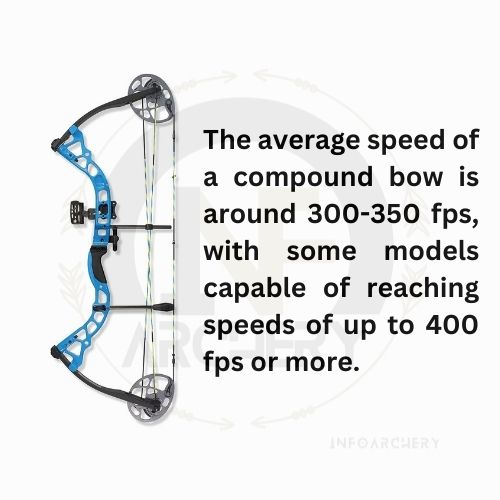
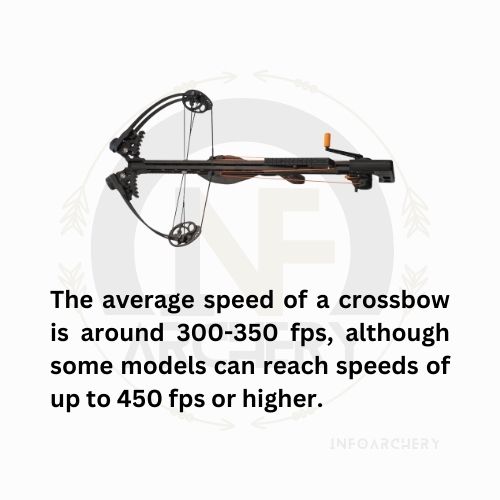
Crossbow’s average speed
Crossbows are similar to compound bows in terms of their use of mechanical aids to increase speed and power. However, crossbows have a more direct energy transfer to the arrow, which can result in even greater speed. The average speed of a crossbow is around 300-350 fps, although some models can reach speeds of up to 450 fps or higher.
It’s important to keep in mind that these are just rough averages, and the speed of a specific bow can vary widely depending on its individual specifications, as well as other factors such as the archer’s technique and form, weather conditions, and the weight and balance of the arrow.
Conclusion of How fast does an arrow travel
In conclusion, the speed of an arrow can vary widely depending on factors such as the draw weight, draw length, bow design, arrow weight, and weather conditions. The speed of a specific bow can also be affected by its individual specifications and the archer’s technique and form.
On average, longbows are the slowest type of bow, with an average speed of around 180-190 fps. Recurve bows are faster, with an average speed of around 190-220 fps, while compound bows and crossbows are generally the fastest, with an average speed of around 300-350 fps.
However, it’s important to note that these are just rough averages, and the speed of a specific bow can vary widely depending on its individual specifications and other factors. Ultimately, the most important factor is choosing a bow that feels comfortable and suits the archer’s individual needs and preferences.
FAQ
Q: What factors affect the speed of an arrow in archery?
A: Several factors can affect the speed of an arrow, such as the bow’s draw weight and length, the arrow’s design and weight, and the prevailing weather conditions.
Q: What is the average speed of a longbow in archery?
A: Longbows are generally slower than other types of bows, with an average speed of around 180-190 feet per second (fps).
Q: How fast do recurve bows shoot?
A: Recurve bows are faster than longbows, with an average speed of around 190-220 fps.
Q: What is the average speed of a compound bow in archery?
A: Compound bows are the fastest type of bow, with an average speed of around 300-350 fps.
Q: What is the fastest type of bow?
A: Compound bows and crossbows are generally the fastest types of bows in archery.
Q: How important is arrow speed in archery?
A: Arrow speed is an important factor to consider in archery, as it can affect the accuracy and distance of the shot. However, it is not the only factor that should be considered when selecting a bow or setting up an archery system. Other factors, such as draw weight, draw length, and arrow weight, should also be taken into account.
Q: How fast can an arrow travel?
A: The speed of an arrow can vary widely depending on factors such as the weight and length of the arrow, bow type, and archer’s technique. However, arrows shot from a compound bow or recurve bow typically travel at speeds between 200 and 350 feet per second (fps), while crossbow bolts can reach speeds of over 400 fps.
Q: Why is arrow speed important?
A: Arrow speed is important because it can impact the effectiveness and accuracy of a shot. Faster arrows generally provide more kinetic energy and penetration upon impact, making them more lethal in hunting or combat situations. Arrow speed can also affect effective range, with faster arrows allowing for longer and more accurate shots.
Q: How is arrow speed measured?
A: Arrow speed can be measured using a chronograph or high-speed camera. A chronograph is a device that measures the speed of an arrow as it passes through a set of sensors, while a high-speed camera can be used to measure arrow speed by analyzing footage of the arrow in flight.
Q: Can arrow speed be improved?
A: Yes, arrow speed can be improved by making adjustments to factors such as arrow weight, bow type, and archer’s technique. Using lighter arrows, upgrading to a more powerful bow, or improving shooting technique can all potentially increase arrow speed.
Q: What is the effective range in archery?
A: Effective range in archery refers to the maximum distance at which an arrow can be accurately and effectively shot. This distance can vary widely depending on factors such as arrow speed, weight, and trajectory, as well as the archer’s skill level and shooting equipment. Practice and experimentation can help archers determine their personal effective range.


